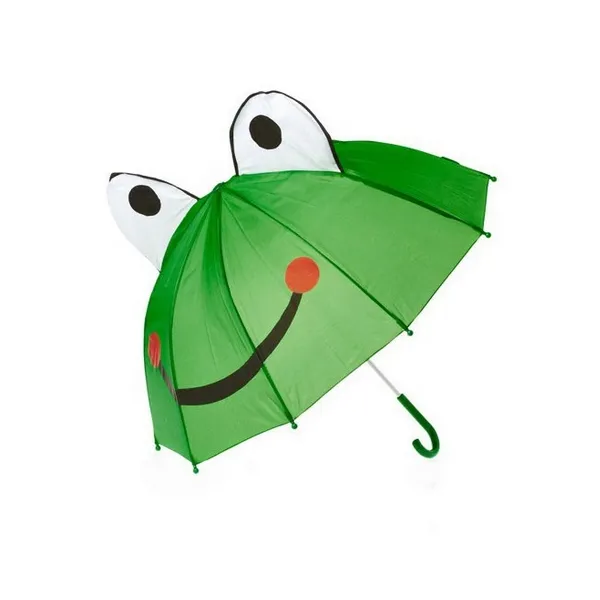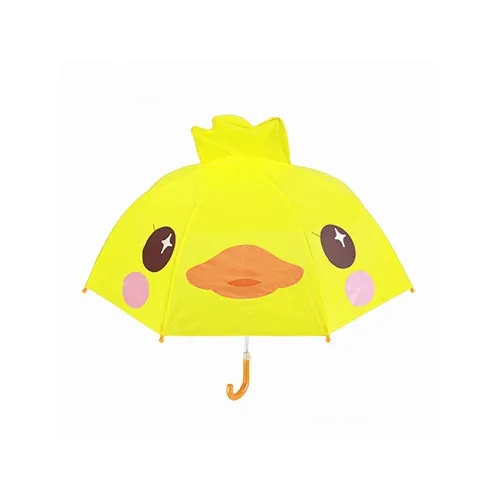What should I pay attention to when choosing a kids umbrella?
2025-10-14
When choosing a kids umbrella for your child, the design is crucial. It directly impacts their safety and comfort. Many parents focus solely on the cute designs, neglecting any potential issues that might arise during actual use. Considering the child's usage habits and safety needs, and considering every detail, ensures both the child and the parent's peace of mind.

Safety is the core of design.
Safety is paramount when designing a kids umbrella. After all, children have limited manual dexterity and lack a sense of self-protection, making them vulnerable to injury when opening, closing, or handling an umbrella. First, avoid using sharp metal ribs and tips. Ideally, a rounded plastic tip will prevent scratches if a child accidentally hits themselves or others with the tip. Choose flexible ribs, such as thickened plastic or flexible fiberglass, so they won't break easily even when a child strains to open and close them. Even if they do break, they won't have sharp edges like metal ribs, reducing the risk of cuts. Finally, be careful to avoid any loose parts. The connection between the handle and the ribs must be secure, and small parts like screws and buckles must be secure. If they fall and get in a child's mouth, it could be dangerous.
Parameter Design
Kids umbrellas shouldn't be designed based on the size and weight of adult umbrellas. They must be adjusted to the child's height and strength, otherwise they'll struggle to use them. Try to keep the weight between 200-300 grams, roughly the weight of an apple. If it's too heavy, a child's arms will become sore after holding it for a while, or the umbrella might even tilt due to lack of strength, rendering it completely useless. For example, some parents buy small, adult-sized umbrellas for kindergarteners. While they may look small, they weigh over 400 grams. Children often have to put them down after holding them for a short while, rendering them useless. The diameter of the umbrella should be determined by height. Kindergarteners should choose a 50-60 cm umbrella, while elementary school students should choose a 60-70 cm umbrella. This provides adequate coverage without being too large for children to control. For example, a light breeze can cause a large umbrella to sway, potentially causing a child to fall. The handle should also be of appropriate thickness, with a diameter of approximately 2 cm ideal. If it's too thick, children won't be able to grip it, while if it's too thin, it's easy to slip. Ideally, the handle should have a small loop at the end so the child can hang it from their backpack when not in use, making it convenient to carry and less likely to lose it.

Material Selection
Kids Umbrellas are primarily made of polyester, a lightweight and waterproof fabric. This prevents water from collecting after rain, preventing it from dripping onto the floor and soaking children's clothes and backpacks when the umbrella is folded. It's also durable, resisting tears from children rubbing it on the floor or in their backpacks. Ensure that environmentally friendly ink is used for printing. Many children like to chew on the handle or touch the umbrella. If the ink contains harmful substances such as formaldehyde and heavy metals, excessive exposure can be harmful to children's health. Therefore, the design of the printed material must be safe, ideally passing safety testing for children's products. The material should also be easy to clean. Children's umbrellas inevitably pick up dirt and stains. If the material isn't easy to clean, the stains will accumulate, making them unsightly and potentially bacterial growth. Polyester is easy to clean; simply wiping with a damp cloth or washing with soapy water will remove stains. It also dries quickly, ensuring it won't affect future use.
Appearance and Design Details
The design of a Kids Umbrella is crucial. Children will only be willing to use it if they like it. Otherwise, even if parents buy an umbrella and the child doesn't like it, they might still be reluctant to use it. Choose designs that are familiar to children, such as cartoon characters or animated characters, or vibrant colors like princesses, superheroes, and animals—all appeal to children. Avoid overly complex designs or glaring colors, as this can cause eye strain. Add cute touches like printing the child's name on the handle or adding a small cartoon charm. This will make the umbrella unique and encourage children to cherish it. As for the length of the folded umbrella, it is best to control it to about 20 cm, which is just enough to fit into the side pocket of a primary school student's backpack. The child can fold it by himself without bothering the parents.





